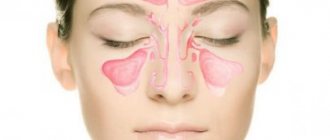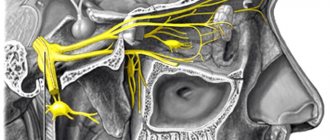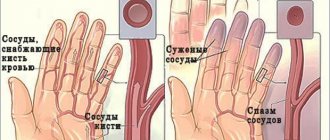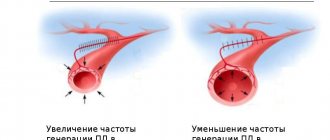What to do if warts appear on your head?
The likelihood that warts will disappear on their own in the near future is very low.
They do not go away even under the influence of mysterious spells, medicinal herbs or other methods that the boundless human imagination can come up with.
Perhaps the warts really are regressing.
But this can happen only in a few years, or even decades.
At the same time, they bother most people.
Even if the wart is overgrown with hair and is not visible, in any case it interferes with cutting and combing.
She is easily injured.
It may bleed, and sometimes the resulting wound festeres.
The wart should be removed.
This procedure does not cause pain, takes a few minutes and allows you to forget about the problem once and for all.
If a person does not see a doctor and is not treated, the wart may increase in size.
This does not pose a direct threat to health.
But subsequent removal requires treatment of a larger area of the head.
There is a higher risk that a scar will appear and hair in this area will no longer grow.
Therefore, it is better to remove a wart on the head earlier, while it is still small.
Diagnosis of the disease
A dermatologist diagnoses and treats papillomas that appear on the head. He will invite the patient to undergo an examination to study the condition of the growth and its benignity using the following methods:
The initial visual inspection of the growths is carried out by a specialist.
- PCR . The diagnostic method helps to determine the presence in the human body of a number of strains of the virus that can provoke the appearance of papillomas. Such research is of no small importance. It allows you to promptly identify viruses that can lead to serious illnesses and complications. PCR is carried out at the molecular level. To obtain a reliable result, the specialist repeatedly enlarges the patient’s DNA fragment and carefully studies its structure;
- Dermatoscopy . A unique method that allows you to enlarge the growth on the head under study several times. Thanks to this, the specialist will be able to recognize in the early stages any changes that occur with papilloma:
- Biopsy . This research method is mandatory. With its help, the development of cancer is determined at the initial stage. After the patient has completed all the necessary tests, the doctor will offer him the optimal therapy that will get rid of the skin pathology. The best treatment option for the growth is to remove it. This procedure can only be performed by an experienced specialist.
Warts on the head: is conservative treatment possible?
Conservative treatment of warts on the head is possible, although it is not always effective.
Are used:
- applications of lactic salicylic collodion
- 40% salicylic patch
The use of these techniques is difficult given the location of the wart.
Most people have hair on their heads.
Therefore, applying the patch can be very painful, and also ruins your hairstyle.
Treatment with drugs is also difficult.
They wet the hair.
With a lot of hair, an adequate dose does not always reach the goal.
Therefore, conservative measures to combat warts of the scalp are often ineffective.
It is much easier to remove them using physical methods in one procedure.
Advantages of this approach:
- one-time procedure
- no spread of warts to adjacent areas of skin
- minimal risk of relapse
- 100% effective (after removal, the wart will definitely disappear, which cannot be said about conservative treatment or chemical coagulation)
Curettage is sometimes used under local anesthesia.
Disease Prevention
Other reasons for the appearance of irritation on the head in the form of spots should be noted:
In case of redness of the skin on the head, be sure to look for the cause. Let it be an accidental burn or something harmless rather than a sign of the development of a serious pathology. And as a preventative measure, you should wear a hat, pay attention to the skin under your hair more often, and wash your hands.
Simple hygiene, adherence to a normal diet, and feasible physical activity help prevent many diseases. Any maintenance and strengthening of the immune system is the best protection against the manifestation of skin pathologies.
Today we will list the main scalp diseases, names and symptoms, a total of 27 possible causes of scalp diseases, but everything in order. Most scalp diseases result in varying degrees of hair loss or some type of skin rash. Many pathological conditions of the scalp are hereditary. Malnutrition or infection can also cause painful skin conditions. Treatment and prognosis of the disease depend on the cause of the problem.
Often, hair and scalp problems are not an independent disease, but only a symptom of some disease, the source and cause of which is far from the head.
Is it painful to remove warts?
Removing warts using cryodestruction is painful.
Painful sensations are observed both during the period of removal and after it, when an inflammatory reaction is formed.
If electrocoagulation or laser is used, there is no pain.
Because anesthesia is used.
When a wart is located on the scalp, topical anesthesia is usually used.
A cream containing prilocaine and lidocaine is applied to the skin.
After a few minutes, skin sensitivity disappears.
The doctor can remove the wart, and the patient does not feel anything during the procedure.
After its completion, when the anesthesia wears off, there is no pain either.
Results and discussion
In the first group of patients (10 patients, comparison group), surgical interventions were performed using traditional methods with radical excision of the tumor within healthy tissue. When the cortical layer was involved in the process, burr osteotomy operations were performed until pinpoint bleeding appeared, followed by the use of Grassolind wound dressings and ointment dressings with sulfargin. After the granulations “matured,” the resulting wound defect was eliminated by free skin grafting—contour autodermoplasty (Fig. 6–9).
In the second group of patients (8 patients, main group), Indian plastic surgery was performed using skin-fat flaps after excision of basal cell carcinoma within healthy tissue, osteonecrectomy of areas of osteonecrosis of the affected bone structures (Fig. 10–13).
To obtain additional plastic material, dermatension operations were performed using tissue expanders (Fig. 14).
In the postoperative period, after complete engraftment of the transferred grafts, the main group of patients underwent close-focus radiotherapy at a total focal dose of 57–60 Gy, 2 Gy daily, every day, for a total of 20–30 sessions.
In 2 patients of the main group, operated on for relapse of basal cell carcinoma in the postoperative period, remote gamma therapy was used. Thanks to the leaf collimator built into the linear accelerator system, the radiation affects only the tumor cells without going beyond its boundaries.
Long-term results (two years after surgery) indicated the absence of relapses in the second group of observations. Relapses in the first group were 34.7%.
Features of treatment of scalp tumors at Neo Skin Medical Center
First of all, the patient receives advice from a qualified dermatologist regarding his problem. The doctor listens carefully to the patient’s complaints, asks questions, and conducts a direct examination. If it is necessary to clarify the diagnosis, preoperative treatment may be prescribed. Depending on the feasibility, surgical treatment will be performed by an experienced surgeon.
Communication with a doctor takes place individually, without the presence of strangers, in compliance with strict confidentiality. Surgical treatment occurs under local anesthesia (drugs are selected individually).
When suturing a wound, only the highest quality materials are used.
Doctors at the Neo Skin center pay great attention to good cosmetic results.
- When removing tumors, only cosmetic (intradermal) sutures are used, which protects against the formation of rough scars.
- The area where the operation is performed is not trimmed (shaved), as happens in ordinary public hospitals, which very often causes patients to delay the moment of seeing a doctor.
- The postoperative period proceeds unnoticed by others. The patient does not drop out of everyday life.
After surgical treatment, the attending physician needs no more than three to four visits in a two-week period for a follow-up examination.
Types of skin tumors
Papilloma is a soft tissue formation of a papillary (thread-like) shape that is flesh-colored or brownish in color. As they grow, they can take on the appearance of a growth with a bumpy surface, similar to cauliflower. Usually, papillomas do not cause discomfort (except for aesthetic reasons), but if injured they can become inflamed or bleed.
Warts are defined as spherical or flat nodules with a keratinized, uneven surface. They have a dense structure, dry, painless. Sometimes warts merge into large plaques. Like papillomas, such growths do not cause discomfort, but with permanent damage they require increased attention.
Older people are more likely to develop keratoacanthoma, a benign tumor that originates from hair follicles. Such formations are round in shape, dense, and flesh-colored. Sometimes keratoacanthoma shows rapid growth, sometimes reaching 2–3 cm in diameter.
The most serious in terms of prognosis is melanoma - a malignant tumor of pigment cells with a high degree of aggressiveness. It looks like a small dark brown plaque with a rough surface and indistinct edges. The danger of melanoma lies in the rapid appearance of local screenings and distant metastases.
Another reason to visit an oncologist is basal cell carcinoma. This is a type of skin cancer that develops from cells of the basal layer of the epithelium. Such suspicion may arise when a flesh-colored or reddish nodule with a flaky or crusty surface is identified. After the latter falls off, the ulcerative defect is exposed. The tumor does not metastasize.
A red, bumpy formation under hair with a soft consistency usually turns out to be a hemangioma. This is a benign tumor that forms in the prenatal period due to a defect in the development of blood vessels. It rises above the surface of the skin, and when pressed, it collapses. When damaged, the hemangioma bleeds easily.
Not only papillomas and warts, but also other neoplasms, including malignant ones, can appear on the scalp.
Features of treatment of scalp tumors at Neo Skin Medical Center
First of all, the patient receives advice from a qualified dermatologist regarding his problem. The doctor listens carefully to the patient’s complaints, asks questions, and conducts a direct examination. If it is necessary to clarify the diagnosis, preoperative treatment may be prescribed. Depending on the feasibility, surgical treatment will be performed by an experienced surgeon.
Communication with a doctor takes place individually, without the presence of strangers, in compliance with strict confidentiality. Surgical treatment occurs under local anesthesia (drugs are selected individually).
When suturing a wound, only the highest quality materials are used.
Doctors at the Neo Skin center pay great attention to good cosmetic results.
- When removing tumors, only cosmetic (intradermal) sutures are used, which protects against the formation of rough scars.
- The area where the operation is performed is not trimmed (shaved), as happens in ordinary public hospitals, which very often causes patients to delay the moment of seeing a doctor.
- The postoperative period proceeds unnoticed by others. The patient does not drop out of everyday life.
After surgical treatment, the attending physician needs no more than three to four visits in a two-week period for a follow-up examination.










